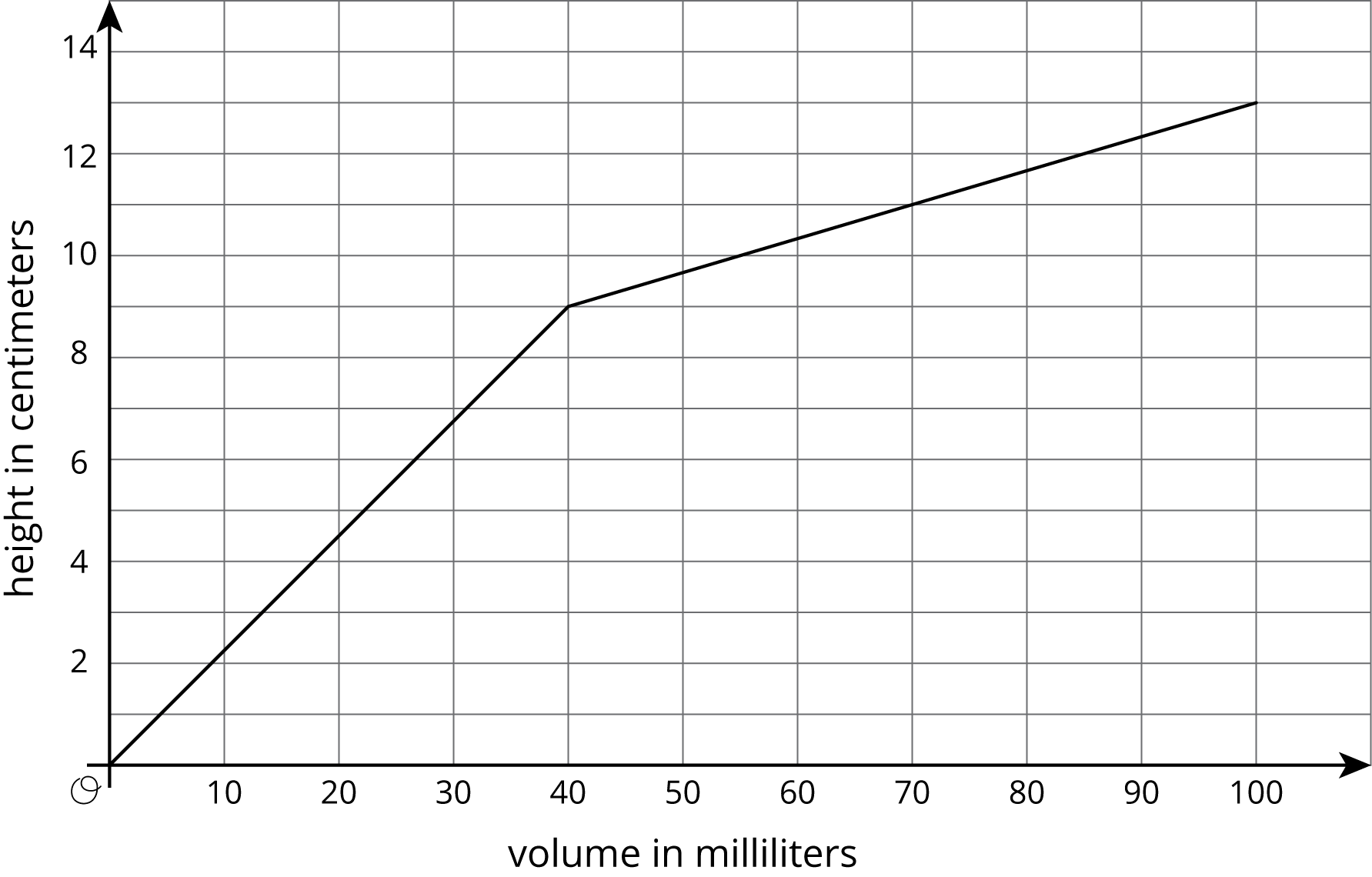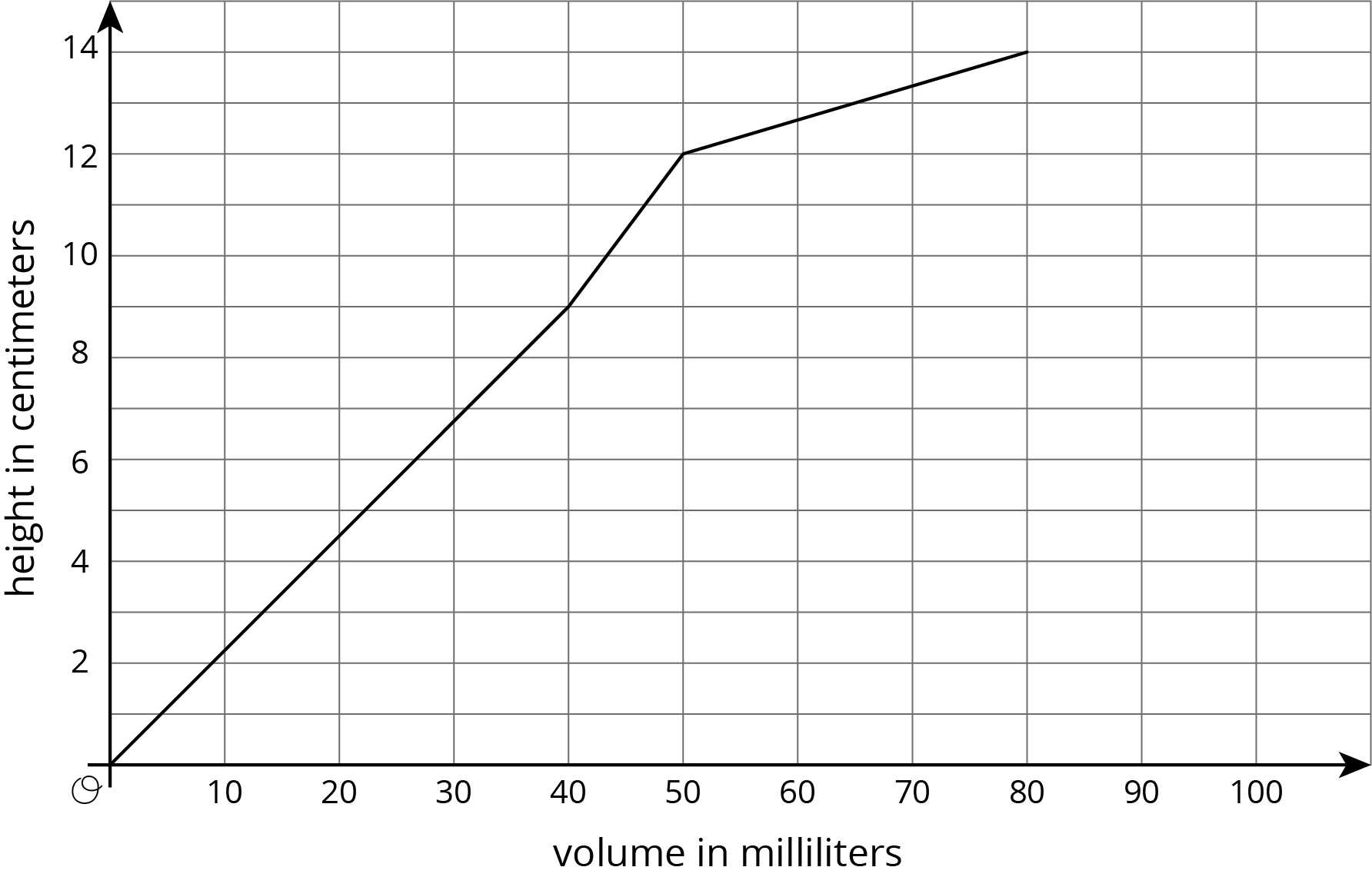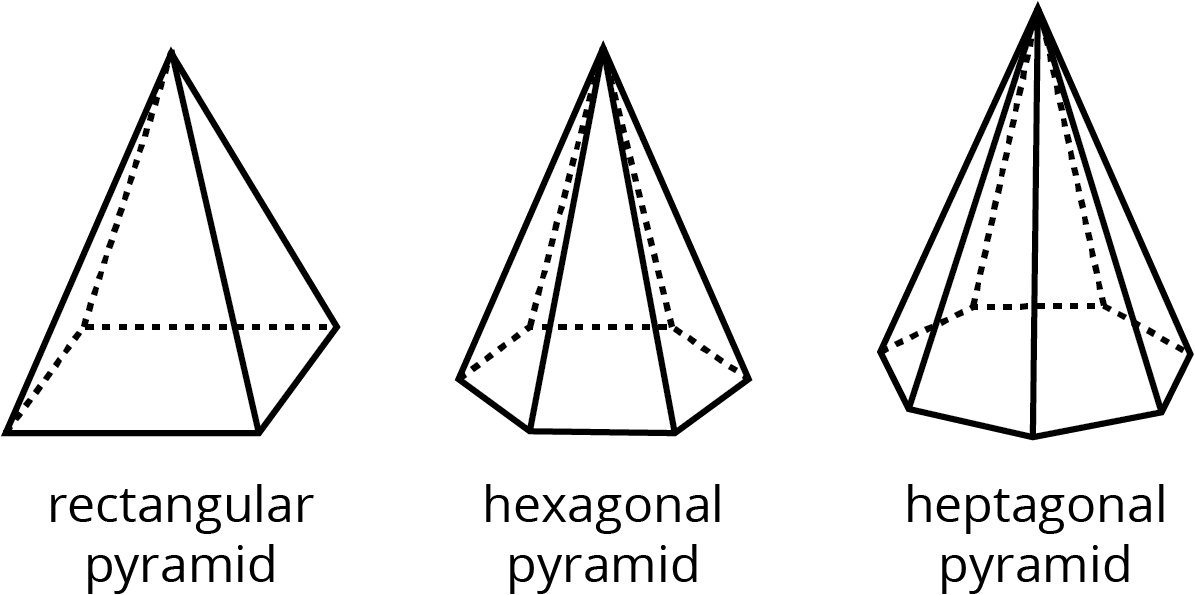Lesson 12
Filling Containers
Let’s fill containers with water.
12.1: Which One Doesn’t Belong: Solids
These are drawings of three-dimensional objects. Which one doesn’t belong? Explain your reasoning.

12.2: Height and Volume
Use the applet to investigate the height of water in the cylinder as a function of the water volume.
-
Before you get started, make a prediction about the shape of the graph.
-
Check Reset and set the radius and height of the graduated cylinder to values you choose.
-
Let the cylinder fill with different amounts of water and record the data in the table.
- Create a graph that shows the height of the water in the cylinder as a function of the water volume.
- Choose a point on the graph and explain its meaning in the context of the situation.
12.3: What Is the Shape?
- The graph shows the height vs. volume function of an unknown container. What shape could this container have? Explain how you know and draw a possible container.

- The graph shows the height vs. volume function of a different unknown container. What shape could this container have? Explain how you know and draw a possible container.

- How are the two containers similar? How are they different?
The graph shows the height vs. volume function of an unknown container. What shape could this container have? Explain how you know and draw a possible container.

Summary
When filling a shape like a cylinder with water, we can see how the dimensions of the cylinder affect things like the changing height of the water. For example, let's say we have two cylinders, \(D\) and \(E\), with the same height, but \(D\) has a radius of 3 cm and \(E\) has a radius of 6 cm.

If we pour water into both cylinders at the same rate, the height of water in \(D\) will increase faster than the height of water in \(E\) due to its smaller radius. This means that if we made graphs of the height of water as a function of the volume of water for each cylinder, we would have two lines and the slope of the line for cylinder \(D\) would be greater than the slope of the line for cylinder \(E\).
Glossary Entries
- base (of a prism or pyramid)
The word base can also refer to a face of a polyhedron.
A prism has two identical bases that are parallel. A pyramid has one base.
A prism or pyramid is named for the shape of its base.

- cross section
A cross section is the new face you see when you slice through a three-dimensional figure.
For example, if you slice a rectangular pyramid parallel to the base, you get a smaller rectangle as the cross section.
- cylinder
A cylinder is a three-dimensional figure like a prism, but with bases that are circles.
- prism
A prism is a type of polyhedron that has two bases that are identical copies of each other. The bases are connected by rectangles or parallelograms.
Here are some drawings of prisms.

- pyramid
A pyramid is a type of polyhedron that has one base. All the other faces are triangles, and they all meet at a single vertex.
Here are some drawings of pyramids.
